I don't have a DIY CT scanner yet. But as mentioned in the description, my plan is to use a cheap, small detector and source, motorization, and software to hack it all together and make it better than the sum of the parts.
It is no coincidence that this is similar to the LadyBug project. Trade time of scan for money and let the technology work while you sleep.
I started by purchasing a broken, cheap x-ray detector and hoping I would get lucky:
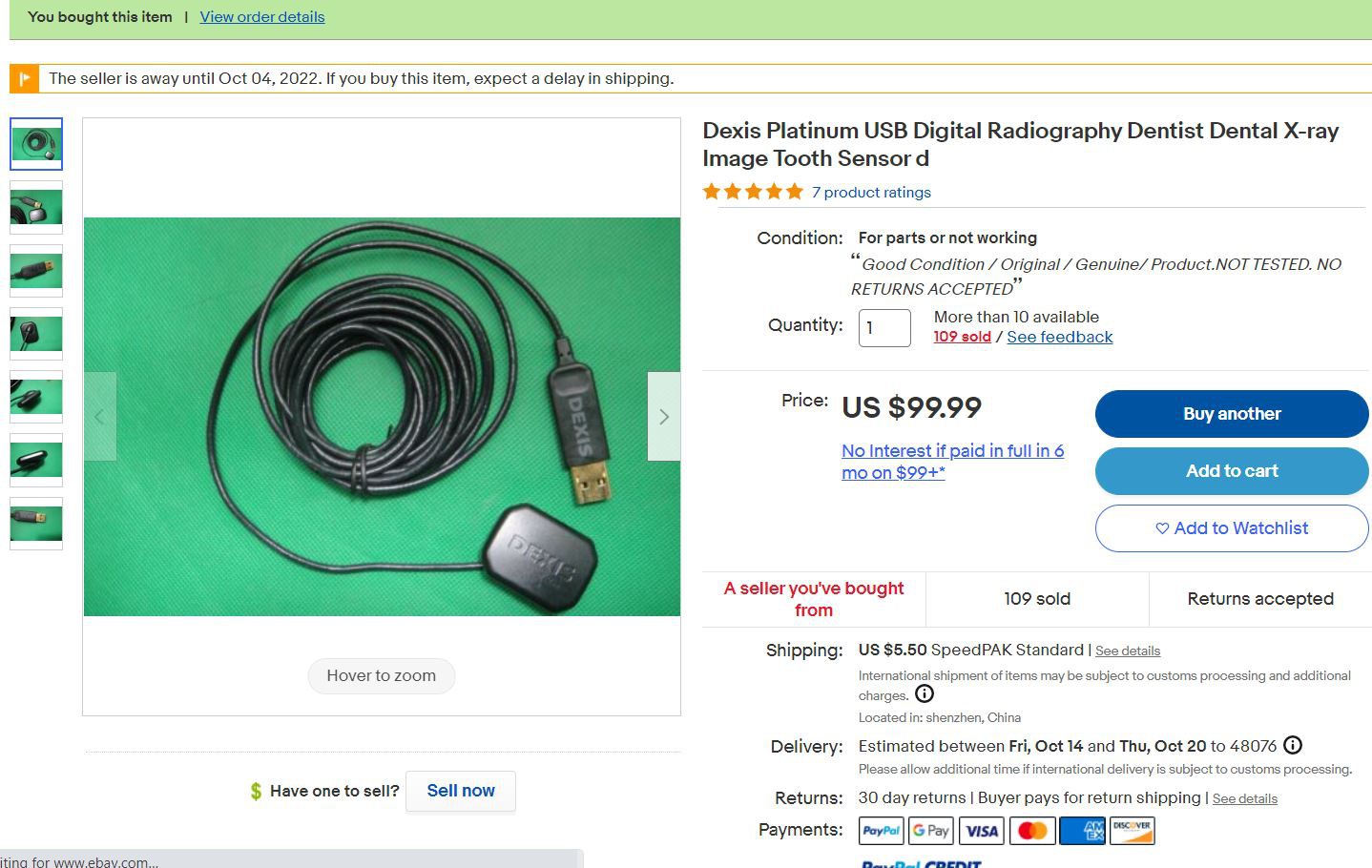
These things are meant for single tooth measurements and were like $7000 when new. My hope was I'd get one that worked out of the box, or barring that, was fixable -- maybe like a cord issue.
Closer inspection of the reviews would have revealed something suspicous. The first review was genuine but the subsequent ones, not so much:
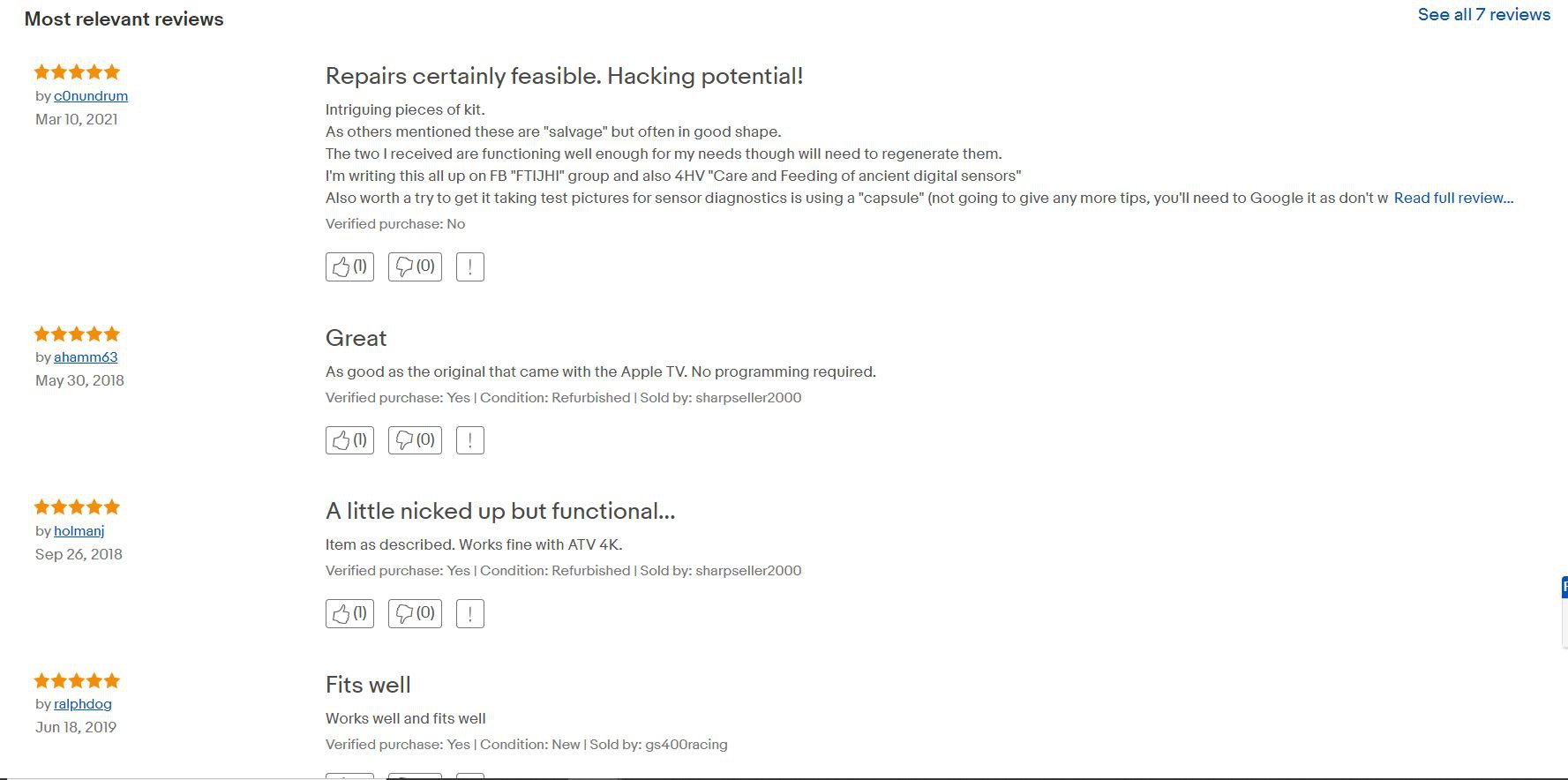
Works great for apple TV!
A couple weeks go by and it's in my hands! cool! There's a cesium iodide scintillator, CMOS sensor, lead sheet and electronics in here! I plug it into my computer and hopefully hear the boop da doop that USB devices do when they're connected...
nothing.
Squeeze and wiggle the wires, still nothing. Believe it or not, I took this as good news: I thought this probably meant that the problem was with the wiring, not the actual sensor. I know how to solder and as long as I could confirm that was the issue, it wouldn't be a tough fix.
Luckily, as mentioned in the description, I do CT scanning for a living already.
So I fixture it up with foam (mostly transparent to x-rays) "good enough" to look at my regions of interest...
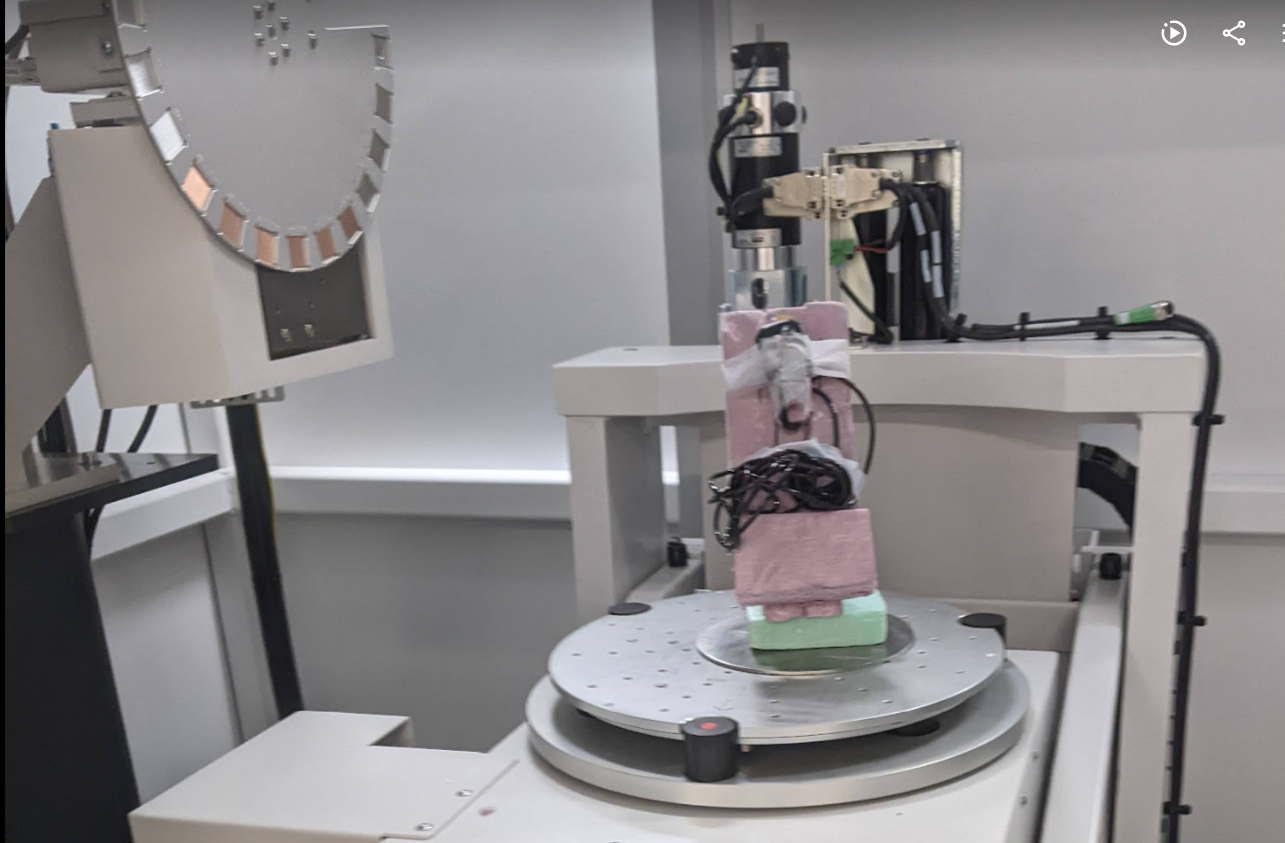
toss it in the machine, and setup a scan.
Now, I was expecting to pore over the result looking over a broken wire somewhere. But what I saw was a bit more obvious. And not so good.
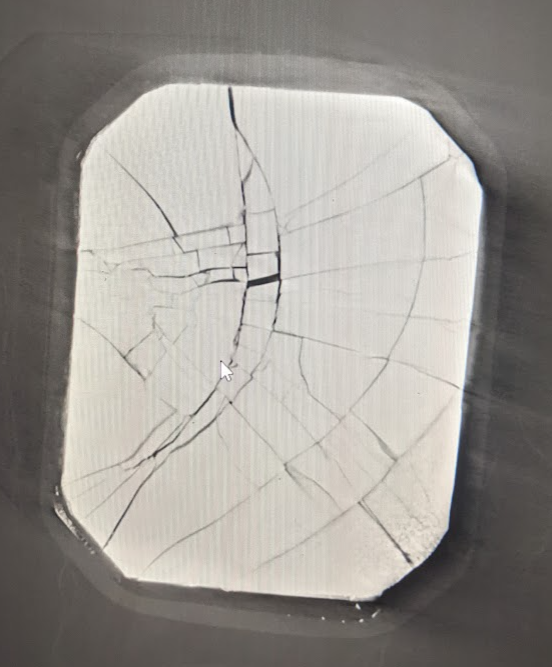
Well.. there's your problem. That's the CMOS sensor array. Looks like someone bit down a bit too hard. No fixing that. Guy on ebay said no returns, he'd give me another one at half price. I'm considering it.
So let's focus for a second on the second big component: The x-ray source. What to use? I did some perusing for handheld dental ones and old tubes and when watching a video by andrew seltzman about the Dexis detectors learned something interesting. New static eliminators for industry use have photoionizers in them that work by, you guessed it, generating (soft) x-rays. This turned out to be the cheapest source by far for getting started and testing at least.
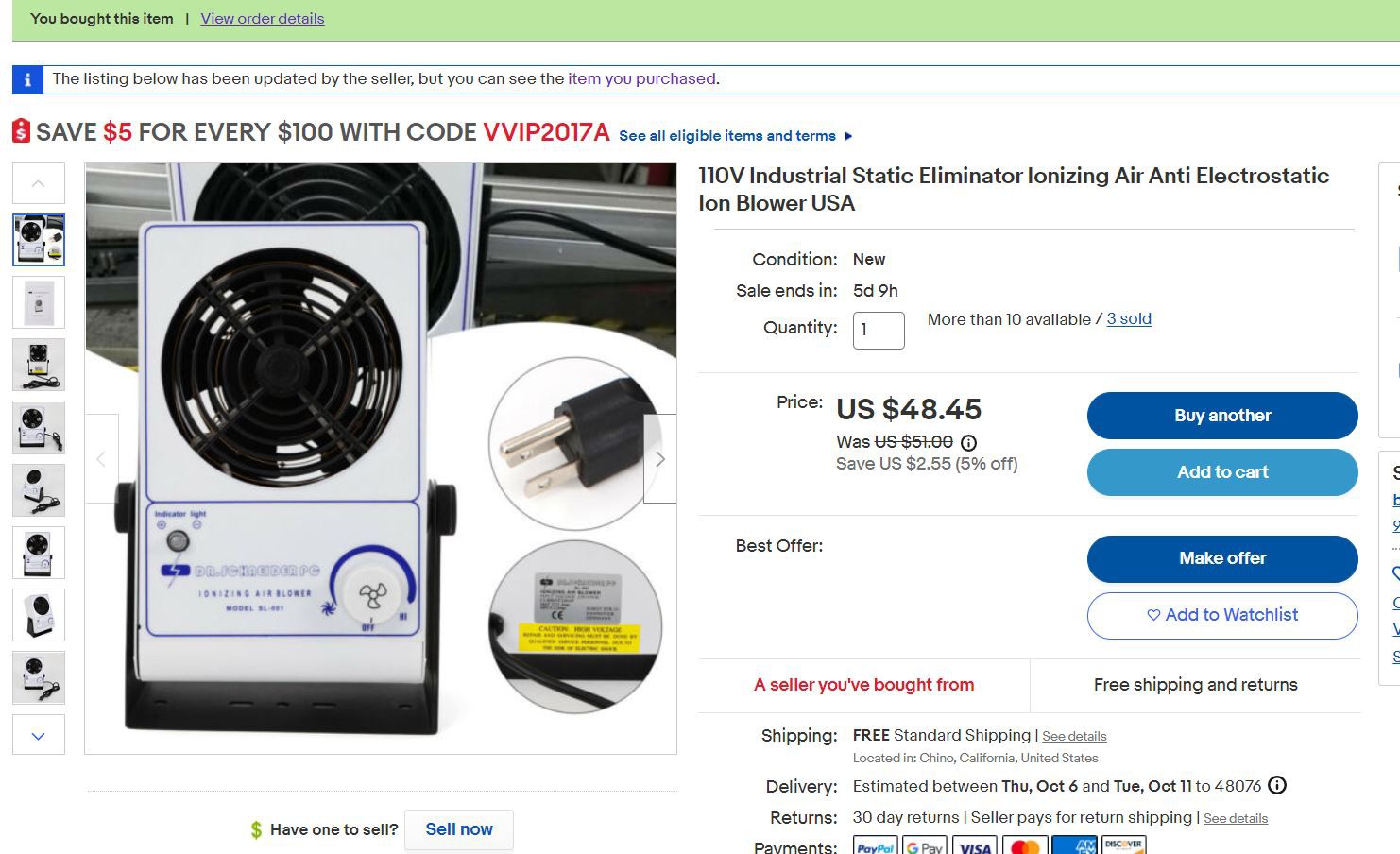
Left without a functioning detector for now, I remembered that like 10 years ago, my grandfather, a dentist, gave me some little pieces of x-ray film in the exact size and shape of my shattered detector (not a coincidence). Sure enough, they were still there --- and now I have a way to see if my ionizer indeed produces soft x-rays.
Thanks Pupa!
 Ahron Wayne
Ahron Wayne
Discussions
Become a Hackaday.io Member
Create an account to leave a comment. Already have an account? Log In.